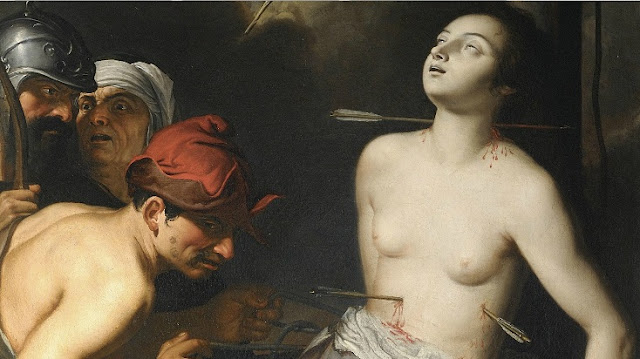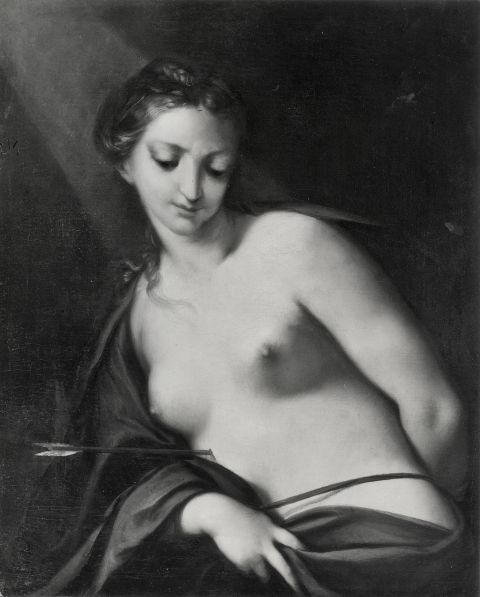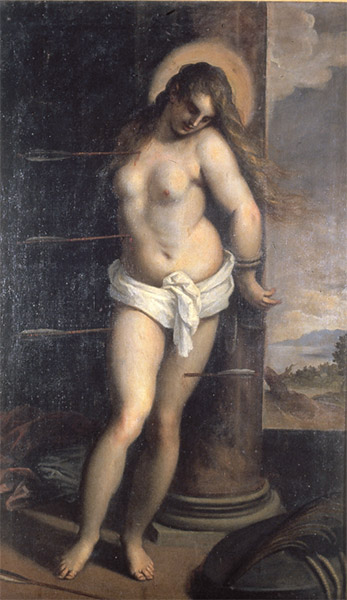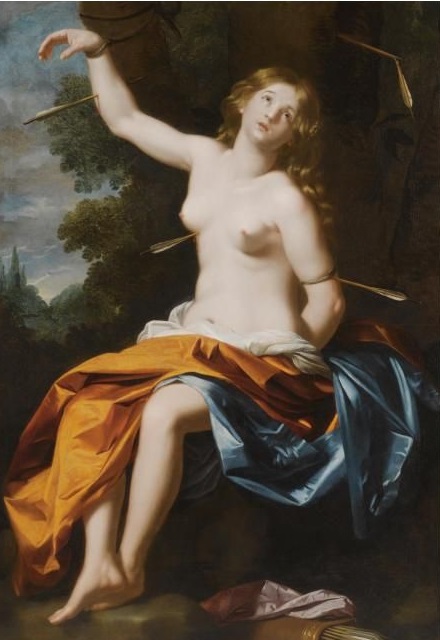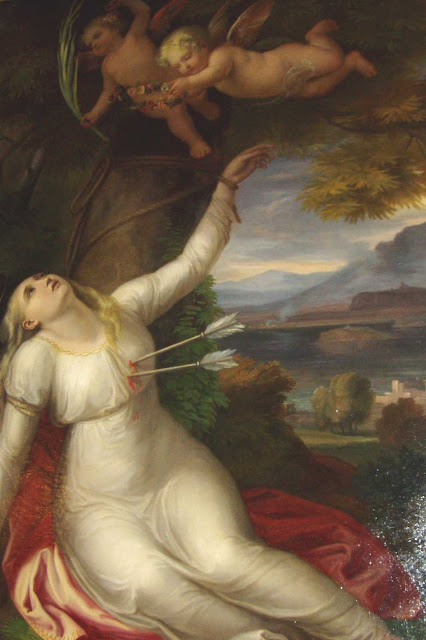Zephyros
Magistrate
Some days ago, one of the most unusual solemnities in Italy was held as usual: the “Mysteries” of Saint Cristina of Bolsena, a martyr who lived in the early fourth century.
Every year on the night of July 23rd, the statue of St. Cristina is carried in a procession from the basilica to the church of St. Salvatore in the highest and oldest part of the village. The next morning, the statue follows the path in reverse. The procession stops in five town squares where wooden stages are set up. Here, the people of Bolsena perform ten tableaux vivants that retrace the life and martyrdom of the saint.
These sacred representations have intrigued anthropologists and scholars of theater history and religion for more than a century. Their origins are unknown.
According to tradition, Cristina was a 12-year old virgin who secretly converted to Christianity against the wishes of her father, Urbano. Urbano held the position of Prefect of Volsinii (the ancient name for Bolsena). Urbano tried every way of removing the girl from the Christian faith and bringing her back to worship pagan gods, but he was unsuccessful. His “rebellious” daughter, in her battle against her religious father, even destroyed the golden idols and distributed the pieces to the poor. After she stepped out of line again, Urban decided to bend her will through force.
Details you will find here ...
https://en.wikipedia.org/wiki/Christina_of_Bolsena
She is the untouchable female, a virgin whom it’s not possible to deflower by virtue of her mysterious and miraculous body. The torturers, all men, were eager to torture and punish her flesh, but their attacks inevitably backfired against them: in each episode, the men are tricked and impotent when they’re not metaphorically castrated (see the tongue that blinds Giuliano). Cristina is a contemptuous saint, beautiful, unearthly, and feminine while bitter and menacing. The symbols of her sacrifice (breasts cut off and spewing milk, snakes licking her sweat) could recall darker characters, like the female demons of Mesopotamian mythology, or even suggest the imagery linked to witches (the power to float on water), if they were not taken in the Christian context. Here, these supernatural characteristics are reinterpreted to strengthen the stoicism and the heroism of the martyr. The miracles are attributed to the angels and God; Cristina is favored because she accepts untold suffering to prove His omnipotence. She is therefore an example of unwavering faith, of divine excellence.





The legend of St. Cristina effectively hides an underlying sexual tension and it is remarkable that such symbolism remains, even in these sacred representations (heavily veiled, of course). While we admire the reconstructions of torture and the resounding victories of the child martyr and patron saint of Bolsena, we realize that getting onstage is not only the sincere and spontaneous expression in the city. Along with the miracles they’re meant to remember, the tableaux seem to allude to another, larger “mystery”. These scenes appear fixed and immovable, but beneath the surface there is bubbling passion, metaphysical impulses and life.
Every year on the night of July 23rd, the statue of St. Cristina is carried in a procession from the basilica to the church of St. Salvatore in the highest and oldest part of the village. The next morning, the statue follows the path in reverse. The procession stops in five town squares where wooden stages are set up. Here, the people of Bolsena perform ten tableaux vivants that retrace the life and martyrdom of the saint.
These sacred representations have intrigued anthropologists and scholars of theater history and religion for more than a century. Their origins are unknown.
According to tradition, Cristina was a 12-year old virgin who secretly converted to Christianity against the wishes of her father, Urbano. Urbano held the position of Prefect of Volsinii (the ancient name for Bolsena). Urbano tried every way of removing the girl from the Christian faith and bringing her back to worship pagan gods, but he was unsuccessful. His “rebellious” daughter, in her battle against her religious father, even destroyed the golden idols and distributed the pieces to the poor. After she stepped out of line again, Urban decided to bend her will through force.
Details you will find here ...
https://en.wikipedia.org/wiki/Christina_of_Bolsena
She is the untouchable female, a virgin whom it’s not possible to deflower by virtue of her mysterious and miraculous body. The torturers, all men, were eager to torture and punish her flesh, but their attacks inevitably backfired against them: in each episode, the men are tricked and impotent when they’re not metaphorically castrated (see the tongue that blinds Giuliano). Cristina is a contemptuous saint, beautiful, unearthly, and feminine while bitter and menacing. The symbols of her sacrifice (breasts cut off and spewing milk, snakes licking her sweat) could recall darker characters, like the female demons of Mesopotamian mythology, or even suggest the imagery linked to witches (the power to float on water), if they were not taken in the Christian context. Here, these supernatural characteristics are reinterpreted to strengthen the stoicism and the heroism of the martyr. The miracles are attributed to the angels and God; Cristina is favored because she accepts untold suffering to prove His omnipotence. She is therefore an example of unwavering faith, of divine excellence.





The legend of St. Cristina effectively hides an underlying sexual tension and it is remarkable that such symbolism remains, even in these sacred representations (heavily veiled, of course). While we admire the reconstructions of torture and the resounding victories of the child martyr and patron saint of Bolsena, we realize that getting onstage is not only the sincere and spontaneous expression in the city. Along with the miracles they’re meant to remember, the tableaux seem to allude to another, larger “mystery”. These scenes appear fixed and immovable, but beneath the surface there is bubbling passion, metaphysical impulses and life.















 ),
),

